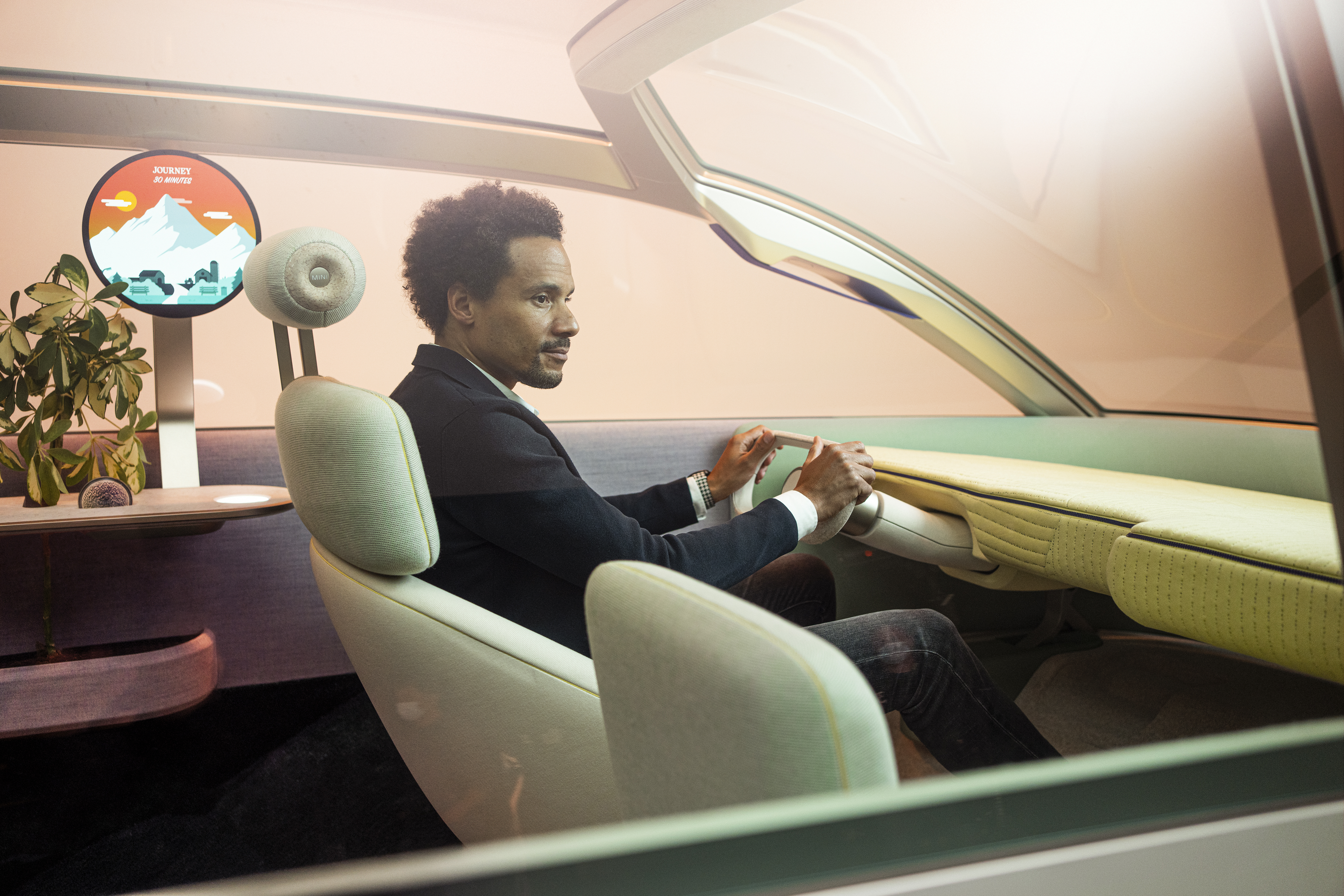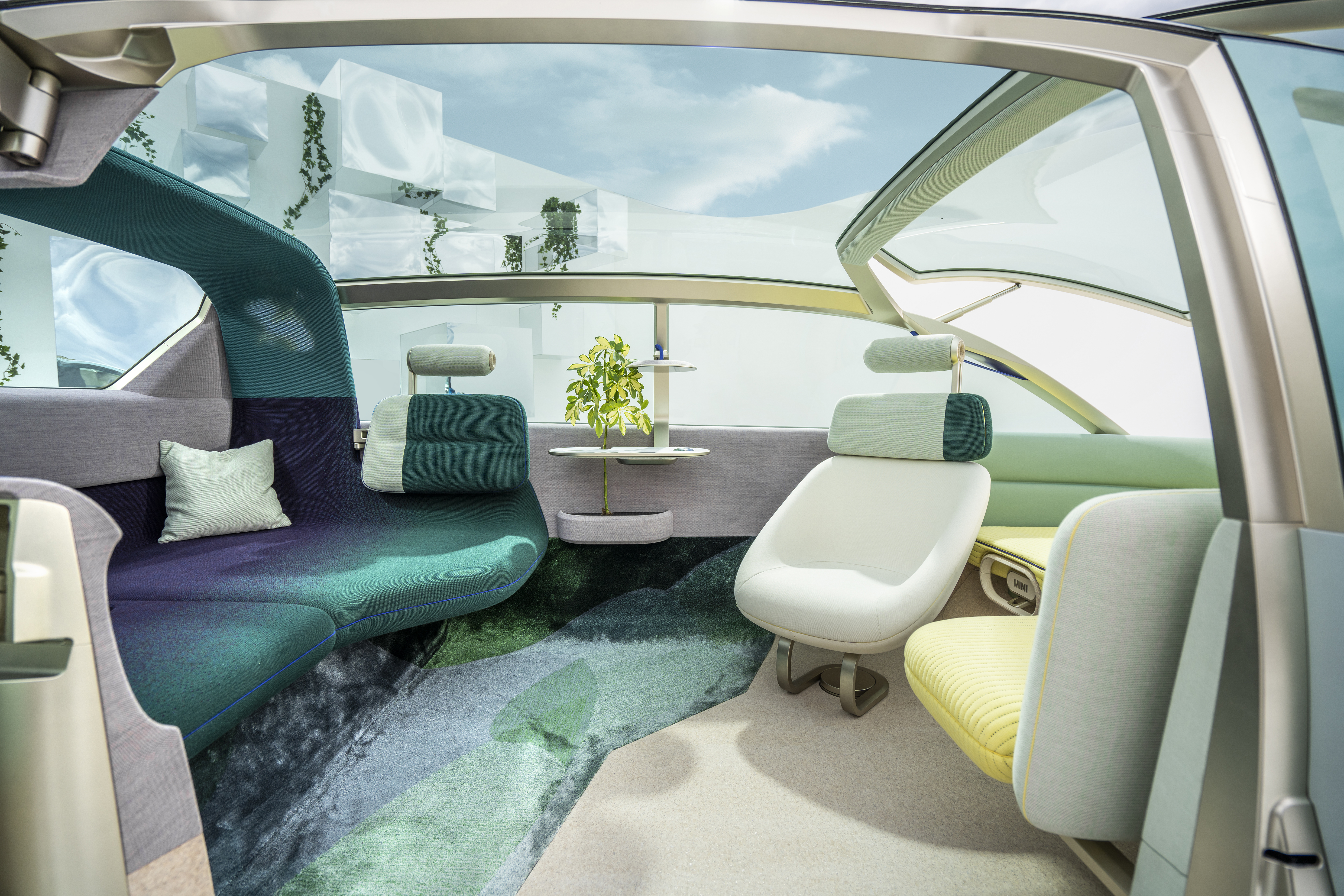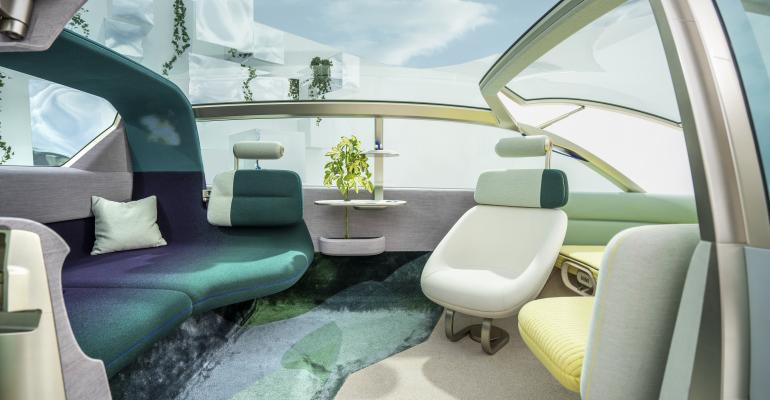Mini reveals the intent behind its Vision Urbanaut concept.
Initially shown in virtual form as a series of digital images last November, the practical multi-seat concept is now set to make its premiere as a physical model at this week’s DLD (Digital Life Design) Conference in Munich, Germany.
Although not yet confirmed for production, Mini has already suggested to WardsAuto that the Vision Urbanaut is being considered both as a 5-seat passenger car and a commercial vehicle – the latter as a competitor to upcoming electric-powered vans to be sold by rivals Mercedes-Benz and Volkswagen.
The new Mini concept has been conceived to explore ideas based around the company’s “Clever Use of Space” catchphrase, taking the form of a tall multipurpose vehicle similar in overall function to one-box offerings popular in many Asian markets.
The Vision Urbanaut is seen as a possible extension of the Mini lineup, which is planned to grow by the middle of the decade to include both a conventional combustion-engine CUV positioned above the existing Countryman and a new electric-powered CUV to be produced in partnership with Great Wall Motor in China.
“We have developed an idea with the Vision Urbanaut of how we can take the Mini attributes into the future. It brings the user’s personal space into the car and opens up various possibilities,” says Bernd Körber, head of Mini.
The BMW-owned brand is considering potential electric models to expand its lineup in the future, which could include the Urbanaut. The spacious MPV is seen as a potentially important factor in raising Mini sales in China.
The Vision Urbanaut heralds a new interpretation of the traditional Mini grille, being octagonal rather than hexagonal in shape, while round headlights sit behind a milled-aluminum cover.
The concept’s vertical sides have a largely unadorned look with smooth surfacing devoid of any major feature lines.
Mini design chief Oliver Heilmer inside Urbanaut concept.
At the rear, the window recalls the shape of the grille, while the wheels are inspired by those available for skateboards, lighting up in one of three Mini mood themes – Chill, Wanderlust or Vibe – when they rotate. The tires feature a tread pattern resembling the Union Jack on the English flag.
Mini is holding back on further details, saying only that the Vision Urbanaut stretches to 175.7 ins. (4,463 mm), making it 10.3 ins. (262 mm) longer than the existing second-generation Countryman.
As well as showcasing Mini’s vision for future urban mobility, the new concept also sets out to create what it describes as “modern living space.”
Entry to the cabin is via a large single sliding side door designed to be opened in tight parking spaces.
In a design twist that recalls the Isetta bubble car produced by BMW between 1955 and 1962, the Vision Urbanaut’s large windscreen is also designed to open when the car is stationary.
The tall glasshouse and glazed roof aim to flood the interior with natural light. Lounge-like ambiance is made possible by a steering wheel that stows away when not in use and front seats that swivel around to face the rear.
The rear seats fold away to form a sofa, while a large digital panel is integrated into the interior trim and roof.
Commenting on Mini’s decision to construct a model of the Vision Urbanaut, Oliver Heilmer, head of the company’s design operations, says: “The best way to understand the concept behind the Vision Urbanaut is to experience it. That is why it was important for us to also make a physical model.”
Mini has not revealed the platform the new MPV is proposed to sit on. However, suggestions are it could be twinned with the upcoming electric-powered CUV to be produced in a joint venture between BMW and Great Wall Motor in China.
Operated under the name Spotlight Automotive, the JV is based in the Chinese city of Zhangjiagang, where BMW and Great Wall Motor are constructing a new factory and adjoining industrial park at a cost of $780 million with a plan to produce up to 160,000 cars annually by 2023 under the Mini and Great Wall Motor brands.

Vision Urbanaut interior seeks to evoke lounge-like setting.





